Covent Garden wasn’t quite in at the start of London’s theatrical tradition – Shakespeare’s Globe for instance was south of the river and other early playhouses clustered in the East End – but it’s been the centre of London’s Theatreland since the time of Charles II. Nell Gwyn acted here, it hosts the ‘actors’ church’ and you can even buy your own theatre in the market. The Royal Opera House is here, English National Opera isn’t far and there are no fewer than thirteen theatres within walking distance of Covent Garden market.
The history of Covent Garden’s theatrical traditions
Architect Inigo Jones was commissioned by Francis Russell, the Earl of Bedford, to develop the area. He started with an Italian-style arcaded piazza centred on St Paul’s church – the earliest Renaissance square in England and the model for later London squares which adopted the layout (though not the arcades).
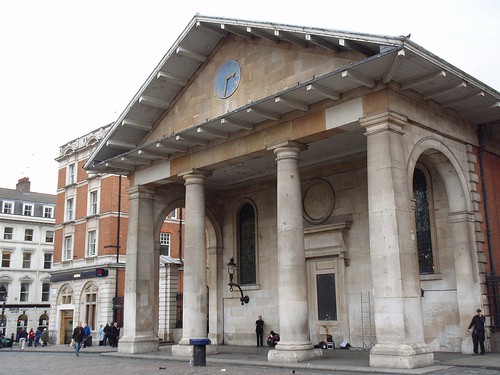
St Paul’s is known as ‘the actors’ church’ for its links with the profession; memorial services for actors, directors and stage crew are often held here, as well as a summer fair in aid of the Royal Theatrical Fund, at which you might spot John Nettles, Sir Donald Sinden, and other luminaries of the stage.
The church itself, though, is quite non-theatrical with its very plain, four-square Tuscan order. Apparently Russell didn’t want to spend much on the church and told Inigo Jones he’d be happy with a plain barn; whereupon Jones promised his patron ‘the handsomest barn in Europe’. However, the church does have one quite theatrical illusion to spring on the spectator – while it has a massive portico on the Covent Garden Piazza façade, the entrance is in fact on the other side, through the gardens.
Drury Lane and the Royal Opera
In the 18th century the theatre was still strictly controlled; Covent Garden had two competing theatres, the Drury Lane and the Royal Opera. They’re still here today, though the Royal Opera House has burned down and been replaced twice, and the current Theatre Royal Drury Lane is the fourth building on that site.
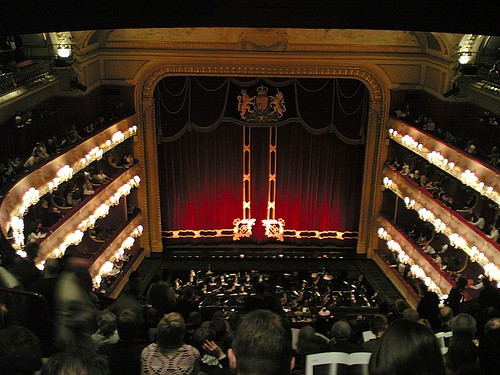
Nell Gwyn started out as an orange seller at Drury Lane, and later trod the boards here, before retiring as King Charles II’s mistress.
Southampton Street
There’s more theatre history in Southampton Street, where several eighteenth century houses survive, with classical detailing, tall windows, and careful use of contrasting colours of brick to create architectural interest – this was still a fashionable area, and the quality of the architecture shows it. No. 27 was where David Garrick, the great Shakespearian actor, lived, conveniently located for the theatre (that wasn’t always a good thing; after a riot at the theatre in November 1755, the London crowd came here and smashed Garrick’s windows).
Several streets are still named after actors of the time – Betterton, Kean, Kemble and Macklin.
Punch & Judy pub
And the Punch & Judy pub in Covent Garden market commemorates the first record of a Punch & Judy show in England – noted by the diarist Samuel Pepys in 1662. There’s still a Punch & Judy show in Covent Garden, though Punch, Judy and Pretty Polly have been joined by the crocodile and the policeman since his time.
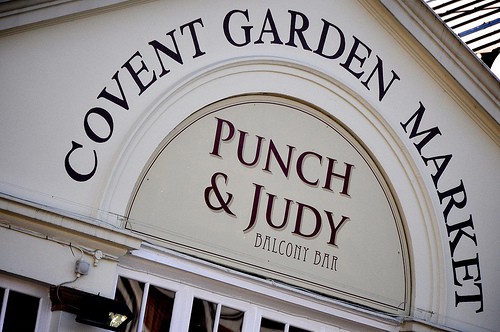
Even some of the restaurants are theatrical – Sarastro’s is one of my favourites for its insane décor. It’s a kind of cross of a theatrical props department, a Pharaoh’s tomb, and a bric a brac shop. It gets mixed reviews for the food, but I’ve always rather enjoyed a night there – you just need to bring the right friends and mix them up with a couple of G&Ts. I’m told there’s some stunning erotic art in the gents, too, though obviously have to take that on trust!
The entertainment tradition continues today with Covent Garden’s street entertainers; two hundred years ago you’d have heard street vendors’ cries and hurdy gurdy players, now there are jugglers and living statues.
Benjamin Pollock’s toy shop
But my favourite theatrical tradition is hidden away in a little shop in the market; Benjamin Pollock’s toy shop. Here you can buy all kinds of toys and particularly toy theatres, from a fiver for a cardboard Punch & Judy to £195 for a huge wooden model theatre, with all its scenery. The best of them all, for me, is the set of three centuries of the Comédie Française – staging Moliere’s Tartuffe, Beaumarchais’ Marriage of Figaro, and Victor Hugo’s Ernani. That’s a lot of theatrical history for just over £20.
Read more about London’s Theatreland.
Search for hotels around Covent Garden (Booking.com).
A guest post by Andrea Kirkby.

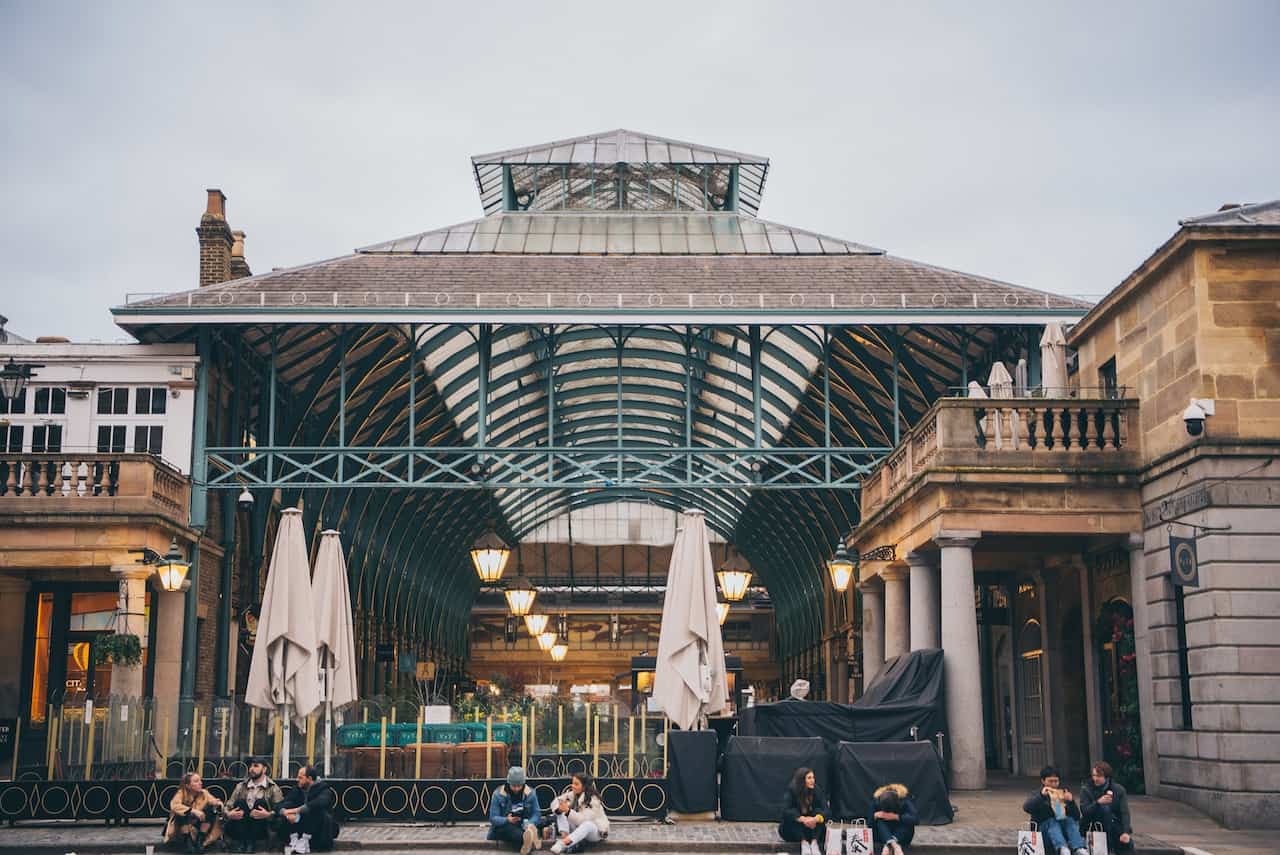
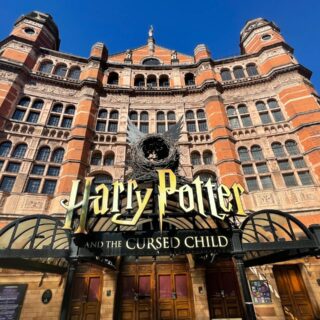
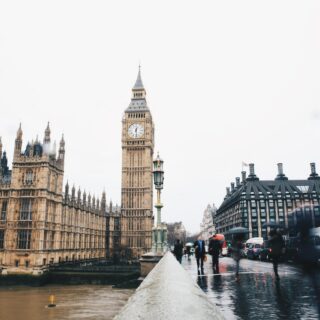
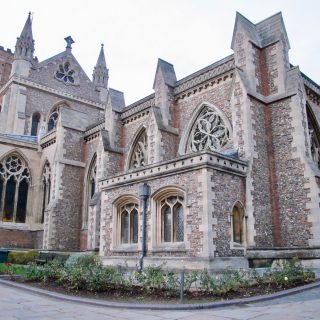







[…] Unravelling the mysteries of Covent Garden […]
Its really good, def worth a try! it’s always mobbed though you normally have to queue…. but worth the wait 🙂
Thanks for the tip Ross! I’ll be sure to look it up next time I’m in London. 🙂
Cheers,
Keith
Covent garden is one of my favourite places in London, it has such a great vibe to it! There is a really good Mexican called Wahaca just off Covent garden square that i always go to when I am in that part of London. 🙂